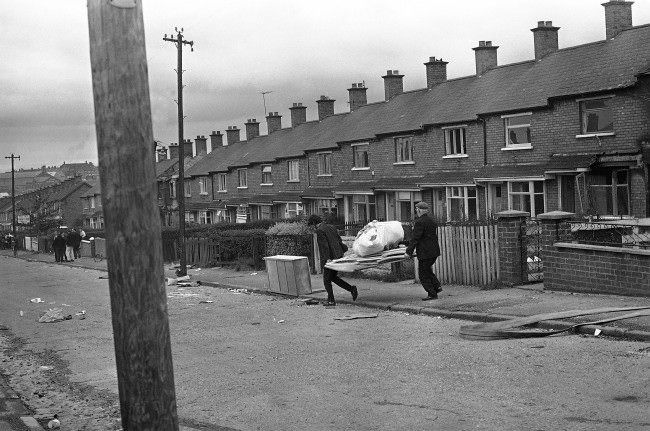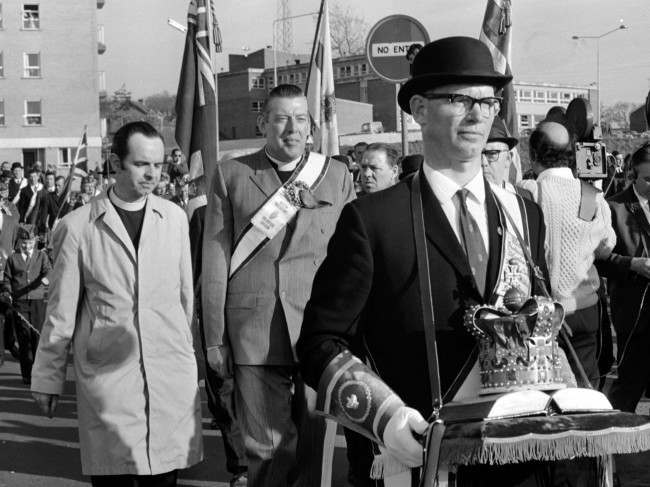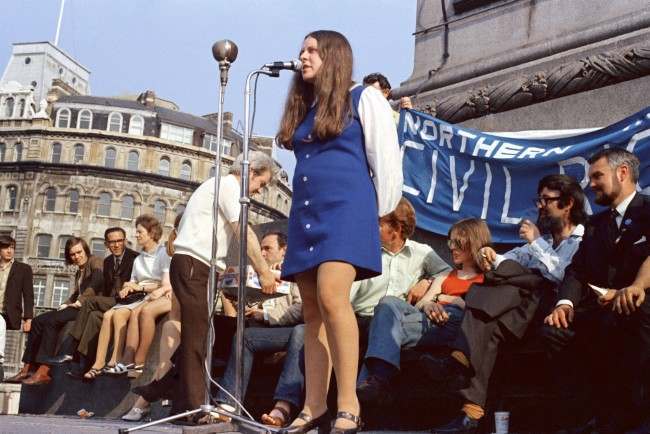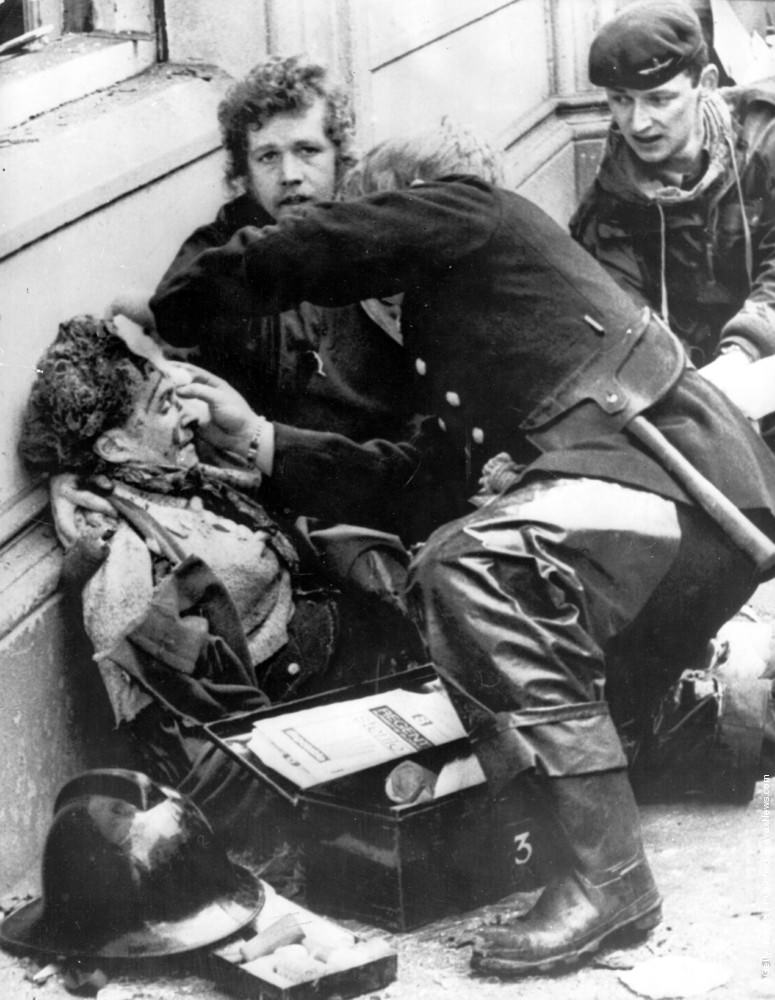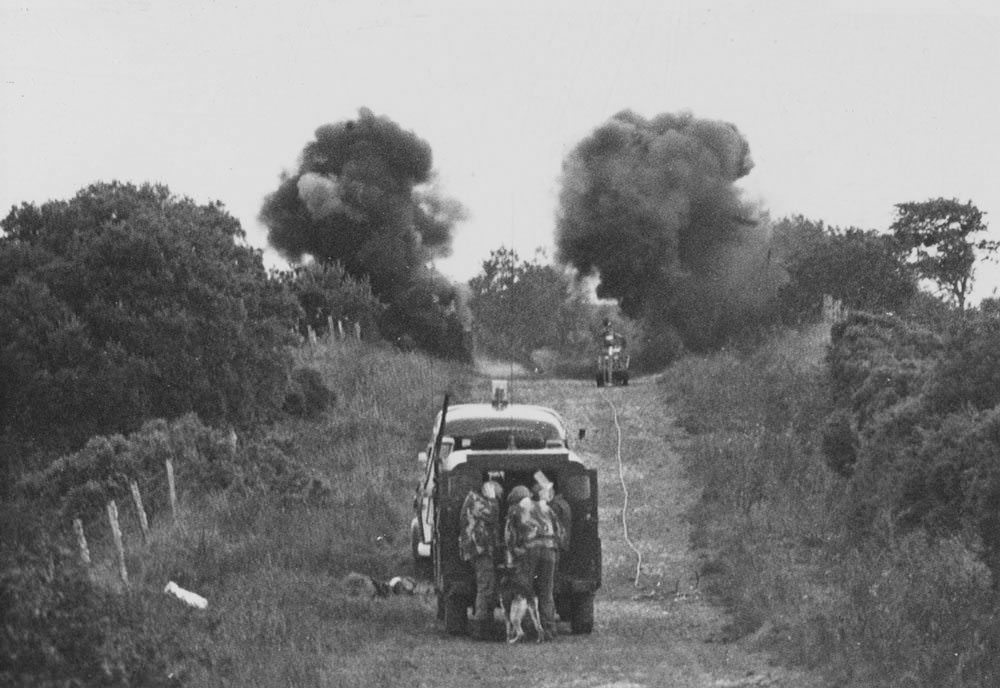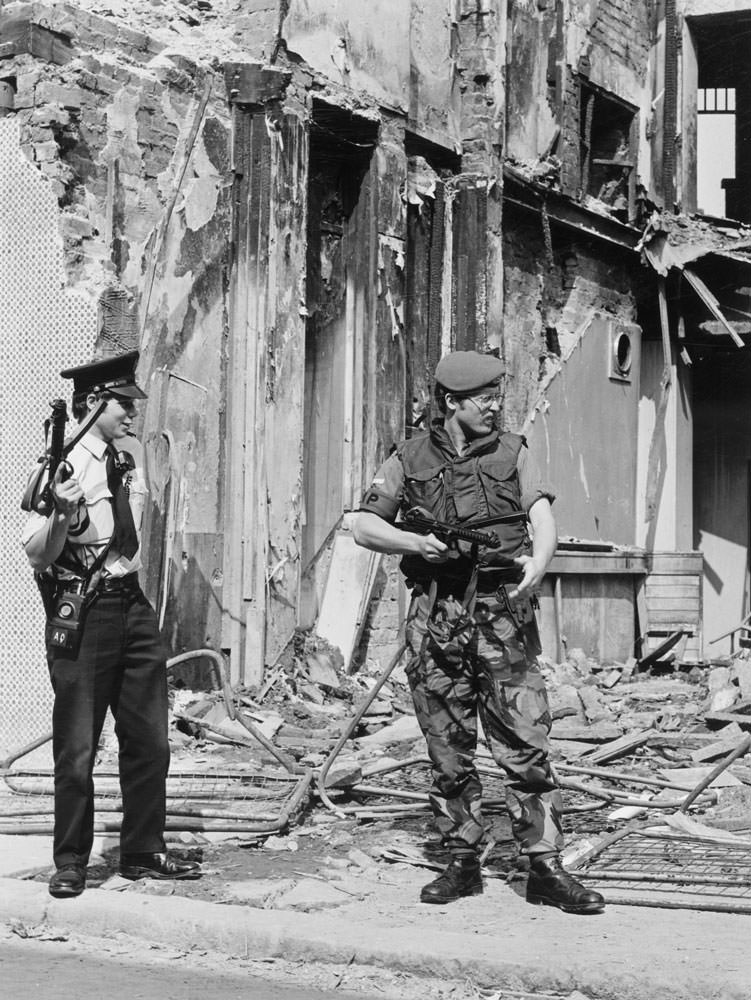The troubles is a common name of Northern-nationalist conflicts in Northern Ireland, which began in the late 1960s and is usually deemed to have ended with the Good Friday Agreement of 1998. It lasted for 33 years and led to over 3,000 deaths, including 1,617 in Belfast alone.
Britain invaded Ireland and claimed ownership. In 1919, the Irish revolted against British rule. An Independent Irish state came into being with 26 southern counties, however; however the six counties of Northern Ireland remained part of the United Kingdom. The two separate ideologies and political instability in Norther Ireland sparked the conflict in 1966. The majority of the population supported unification with Britain and significant number of people also supported reunification with the Republic of Ireland. In 1969, the British military intervened to restore the law and order.
#1 Boy throwing stones at British soldiers in Northern Ireland, 1971.
#2 A commandeered bus is driven backwards through a picket of women who want the violence to end during riots on the Falls Road, Belfast, 3rd July 1970.
#3 Devastation at a bomb damaged police station in Chichester Road, Belfast, Northern Ireland in November 1971, in which a police inspector died.
#4 Bernadette Devlin, Member of Parliament for Mid-Ulster, during her all-night picked of Number Ten Downing Street, London on Oct. 20, 1971.
#5 British soldier arrests a demonstrator in Derry on Bloody Sunday 1972.
#6 A crowd of demonstrators passing British soldiers in Leeson St. in the Falls Road area of Belfast, July 1970.
#7 Armed British troops take up defensive positions on the Falls Road, 4th July 1970. 5 Catholics were killed, 60 injured and many homes devastated when the British Army imposed a curfew in the Falls Road.
#8 On patrol in Little Patrick Street, Belfast, 1973.
#9 An old woman, a rosary dangling from her neck, clasps her hands on finding a British Army sharpshooter on her door step in BelfastÂs market area as troops flushed out snipers barricaded in bakery in Northern Ireland capital on August 11, 1971.
#10 With the fear of being burnt out, Protestant householders move some of their belongings from a street in the Ardoyne area of Belfast, Northern Ireland on August 10, 1971.
#11 Schoolboys cheer adn chant from a pile of burnt-out busses and lorries in the aftermath of the riots. 9 Feb, 1971
#12 At the height of the blaze, flames leap from a 12-acre timber yard in Belfast’s dockland. The fire raged for three hours before it was brought under control. 10 Feb, 1971
#13 Vehicles burn in the New Lodge Road area of Belfast when a crowd of about 200 set fire to cars, vans and lorries after an army scout car ran over and killed a five-year-old girl. 8 Feb, 1971
#14 Soldiers changing a flat tyre on a car outside an Army base in Londonderry.
#15 This former airfield is now the internment camp for IRA detainees. The hutments now have central heating and other modern amenities. The camp is called Long Kesh. The airfield was built 30 years ago and used by bombers taking off for Germany.
#16 Mother Teresa making friends with Belfast children, where she is to start a mission in Belfast, Northern Ireland on Nov. 6, 1971.
#17 Armed British soldiers impose a curfew on the Falls Road in Belfast, July 1970.
#18 An armed British soldier on patrol in Belfast, 24th March 1971.
#19 A car explodes after troops carried out a controlled explosion of a suspected bomb in Belfast, 17th November 1971.
#20
#21 Three British soldiers, two armed with automatic rifles, and man at left with a Stirling sub-machinegun, shelter behind a wall in the Andersonstown area of Belfast, Northern Ireland on Nov. 1, 1971, during riots which followed the shooting of two policemen.
#22 Children drawing pro Irish Republican Army notes with chalk on the pavement, such as Up the IRA, in Leeson Street in Belfast, Northern Ireland on August 17, 1971.
#23 British troops take up positions in the doorways of shops near Eliza street, in the markets area of Belfast, a short distance from the city centre of Northern Irelands capital. Area was the scene of continued bitter fighting as British forces clashed with elements of the Irish Republican Army provis
#24 Joe Cahill (centre) school gym Ballymurphy northern ireland speaking talking, chief of the Provisionals in Belfast, who during Press conference refuted claims made by the army a few hours earlier that the IRA were virtually beaten, 13 Aug, 1971.
#25 People of Ballymurphy estate pay their respects to Reverend Hugh Mullan as his coffin leaves Corpus Christi Roman Catholic Church after Requiem Mass.

Father Hugh, 37, was killed during Monday night’s bloodbath in Belfast, which occurred after the announcement of internment of terrorists, after attempting to give last rites to a wounded parishioner. He was curate of St John’s in Falls Road and he will be buried in his home town of Portaferry in County Down, Northern Ireland
#26 Mourners file past the coffin of Father Hugh Mullan, at Corpus Christi Roman Catholic Church on the Ballymurphy estate after Requiem Mass, 11 Aug, 1971
#27 Father Hugh Mullan, 40, of St John’s Presbytery, Falls Road, the priest who was shot and killed when administering the last rites to a casualty in riots near the Ballymurphy estate earlier today, 10 Aug, 1971
#28 British troops straddle a main road near the Catholic Unity flats in Belfast, Northern Ireland

During a lull in the recent current wave of disorders which had flared up in a show of strength by a breakaway group of the Irish Republican Army earlier in the week. Club wielding republican extremists had forcefully halted traffic during the funerals of catholic riot victims. 2 Nov, 1971











